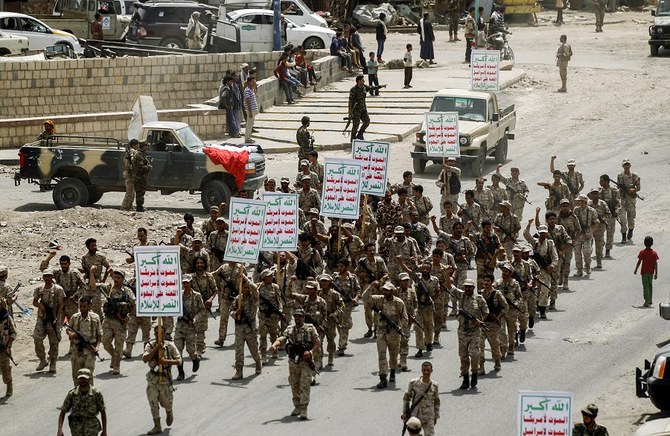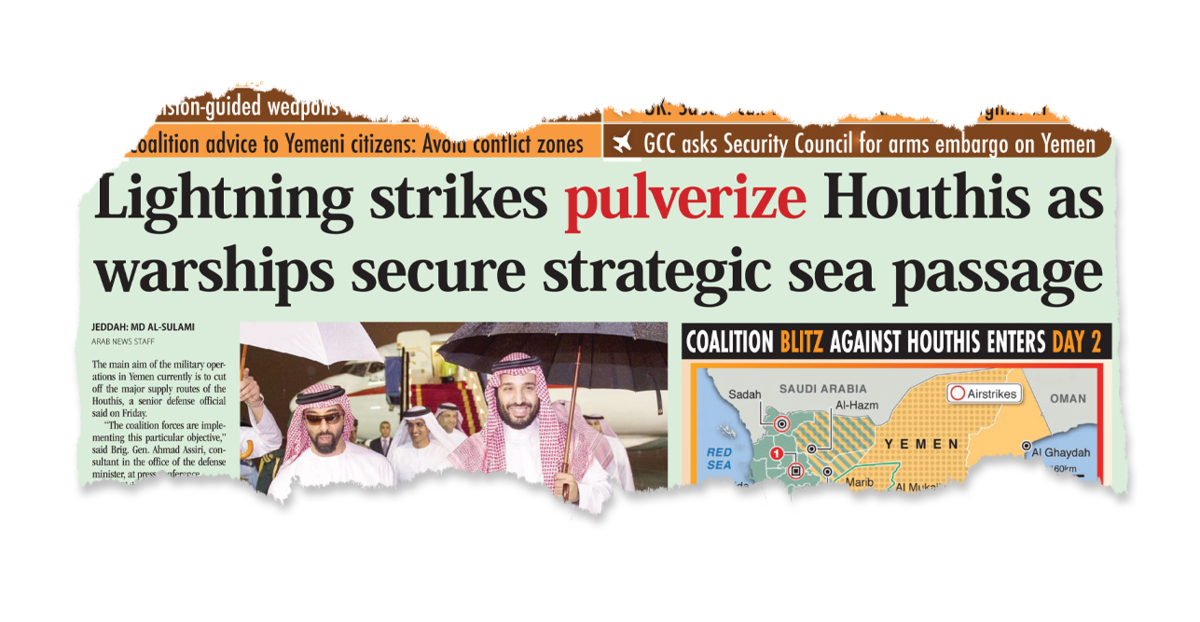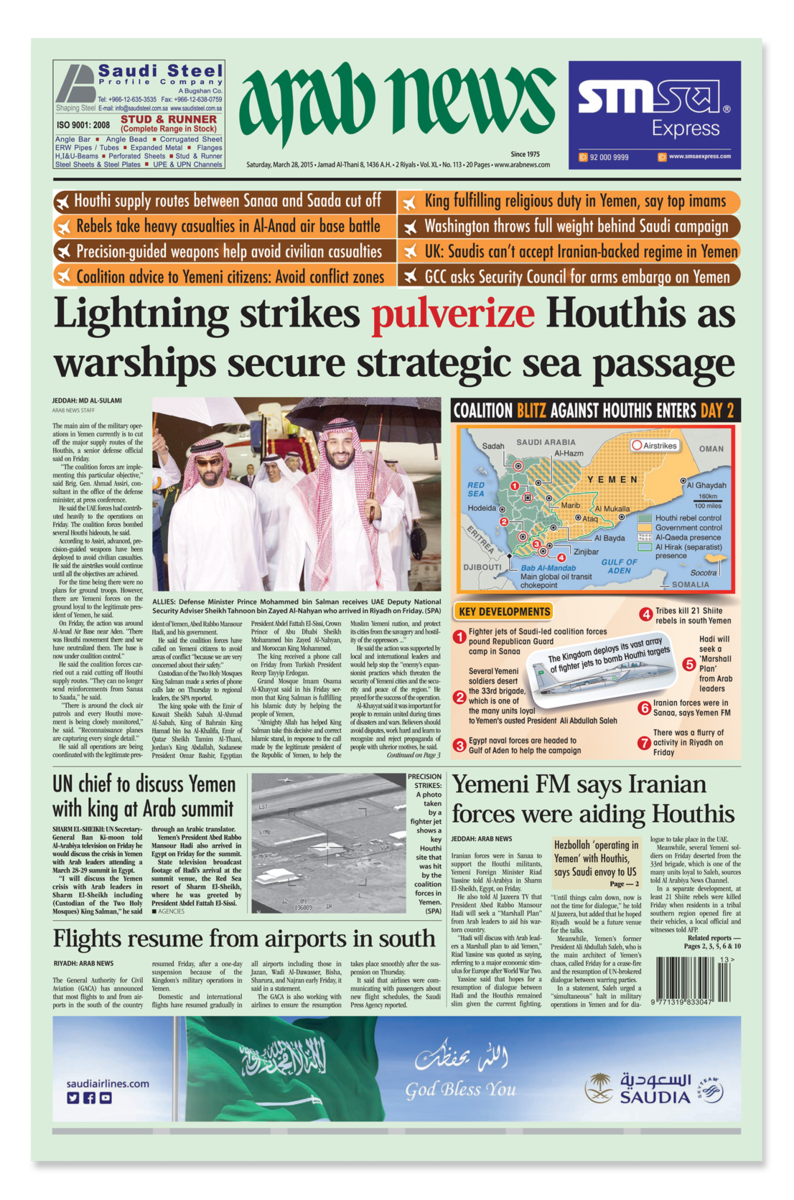- ARAB NEWS
- 04 Jul 2025

Saeed Al-Batati
Summary:
On March 22, 2015 Houthi leader Abdul Malik Al-Houthi, inspired by rapid military gains in northern Yemen, gave a televised speech calling for the mobilization of forces to defeat Yemeni President Abed Rabbo Mansour Hadi, who had decamped to Aden from the captured capital Sanaa.
Hadi, backed by inadequate numbers of remaining troops and tribesmen, nevertheless vowed to resist the Houthi advance and requested military support from the neighboring Gulf states.
It came quickly, in the shape of a heavy aerial bombardment by a Saudi-led coalition that helped to tilt the balance of the conflict in favor of the government, which was able to recover control of almost 80 percent of the country. But the civil war, which has claimed the lives of thousands of Yemenis and driven many more toward starvation, continues with no end in sight.
AL-MUKALLA (Yemen): On March 22, 2015, Abdul Malik Al-Houthi, the leader of Yemen’s Iran-backed Houthi militia, appeared on TV calling for a general mobilization of fighters to expel Al-Qaeda and Daesh militants.
Two days earlier, more than 100 people had been killed by three suicide bombs detonated in mosques in the Yemeni capital Sanaa, which had been seized by the Houthis in September 2014. Responsibility for the attacks was claimed by the Yemeni branch of Daesh.
Here in Yemen, however, we knew that the Houthi leader’s real objective was to finally defeat Yemeni President Abed Rabbo Mansour Hadi, who after the fall of Sanaa had decamped to Aden, now the country’s temporary capital.
A day before the Houthi leader’s call to arms, Hadi had given a defiant speech in which he vowed to raise the Yemeni flag inside the northwestern city of Saada, heartland of the Houthi insurgency, and to challenge Iran’s designs in Yemen.
I watched both speeches and sensed that a major showdown between the forces of the two leaders was inevitable. The Houthi leader’s speech coincided with the seizure by his forces of Taiz, Yemen’s third-largest city, and their continuing march toward the southern provinces that were Hadi’s fiefdom.
Hadi was aware that the Houthis outnumbered and outgunned his ragtag forces, so he despatched his foreign minister to appeal on TV for military intervention from the neighboring Gulf states.

“The main aim of the military operations in Yemen currently is to cut off the major supply routes of the Houthis, a senior defense official said on Friday.”
From a story by Mohammed Al-Sulami on Arab News’ front page, March 28, 2015
Hadi received an immediate shot in the arm when on March 22, the UN Security Council reaffirmed “its strong commitment to the unity, sovereignty, independence and territorial integrity of Yemen,” and “condemned the ongoing unilateral actions taken by the Houthis that were undermining the political transition process and jeopardizing the country’s security and stability.”
But the strongly worded statement did not stop the Houthis’ march toward Aden. As a Yemeni reporter who had been following the crisis since day one, I knew there was one man whose influence was inspiring the Houthis’ ruthless pursuit of Hadi: Ali Abdullah Saleh, who had been Yemen’s president for three decades before he stepped down in February 2012 after months of turmoil in the country inspired by the Arab Spring protests.
Saleh was succeeded by Hadi, his deputy for 18 years. But even after leaving office, Saleh continued to exercise considerable influence over army units, facilitating the rapid military expansion of the Houthis.
This influence continued even after Saleh’s assassination in 2017 by the Houthis, following the collapse of the alliance between the two. Hadi later said when Saleh had stepped down as president, he had handed over only the flag of Yemen, and the army had ignored his successor’s orders to fight the Houthis.
Shortly after the Houthi leader’s speech, convoys of his troops descended on Aden, and given the speed of their expansion in northern Yemen, observers knew that they were poised to take the city and might capture Hadi for the second time.
Iran-backed Houthis seize control of Yemen’s capital Sanaa.

Houthis take over the government, dissolve Parliament and place Yemen’s President Abed Rabbo Mansour Hadi under house arrest.

Hadi flees to Aden, where he vows to defeat the Houthis.

Houthi leader Abdul Malik Al-Houthi declares war on Hadi and orders troops to move to Aden.

The Saudi-led coalition begins bombing Houthi forces, enabling loyalists to take the offensive.

Hadi, meanwhile, had scrambled to bring together local tribesmen and remnants of army troops under the command of his Defense Minister Mohammed Mahmoud Al-Soubaihi. The continuing influence of Saleh’s grip on the army, however, was all too visible as military units in Dhale, Lahj, Abyan and Shabwa that had long been under the former president’s command threw their weight behind marching Houthi forces, smoothing their way to reach the outskirts of Aden within days.
The implications of the Houthi military expansion were huge. The civil war had allowed Al-Qaeda and Daesh to expand in southern provinces when thousands of army troops and other security forces had abandoned their positions to fight along with the Houthis.
Experts here told me at the time even that Saleh and the Houthis were behind the resurrection of Al-Qaeda and Daesh to discredit Hadi and create a rationale for invading Aden and neighboring provinces.

The civil war has disrupted the implementation of outcomes of the National Dialogue Conference. Starting on March 18, 2013, the conference brought together all Yemeni factions, including the Houthis, who agreed on solutions to the country’s many thorny issues.
The conference, which concluded on Jan. 22, 2014, approved a plan to divide the country into six semi-autonomous regions. But with the Houthis on the verge of seizing control of the whole country on March 22, 2015, it was impossible to put this plan into action.
The other consequence of the Houthis’ military activities has been the introduction of an unprecedented religious divide in Yemen’s political dialogue. Wars in the country had long been seen as competitions between different political or tribal forces. But when the Houthis, a Shiite group seeking to invade the Sunni-dominated south, it was to the sound of a new sectarian discourse.
At the peak of national frustration, relief came from the sky
Saeed Al-Batati
For days, as the Houthis crushed tribal and military resistance on their way to Aden, seizing control of the city’s airport on March 25, citizens and army commanders alike despaired that anything could blunt their advance. Hadi fled the country, and military officers who confided in me spoke of reverting to insurgency tactics rather than facing the superior Houthi forces in conventional battles.
Then, at the peak of national frustration, relief came from the sky. On March 26, 2015, an overjoyed military officer who had been a source of mine for more than a year called me at about 3 a.m., unable to wait until daylight to tell me the news. “Saeed, wake up! The Saudis have begun bombing the Houthis in Aden,” he said. “Now we can regroup and fight them off.”
It has not, of course, been quite that simple. Despite the intervention of the Saudi-led coalition, the civil war that began on March 22, 2015, continues, claiming the lives of thousands of Yemenis, causing the world’s worst humanitarian crisis, and further splintering an already divided nation.